|
|
|
The Birds Of LondonAndrew Self
Christopher Helm
2014
"The parks, reservoirs, rooftops and gardens of London - here defined as the area within 20 miles of St Paul's Cathedral - have a surprisingly rich avifauna, including a healthy population of one of Britain's rarest breeders, the Black Redstart. The region also has a remarkable list of rarities - in recent years Canary Wharf has proven to be a magnet for vagrants, while one of the very few British records of Tengmalm's Owl hails from Plaistow - an unfortunate bird stoned to death by local urchins in 1877. Some species, like the Peregrine Falcon, Black-headed Gull and Ring-necked Parakeet, have seen their fortunes soar over recent decades; others, such as House Sparrow, have suffered a population collapse. While as recently as a century ago, the London area had breeding populations of birds such as Wryneck and Red-backed Shrike, which are now nationally extinct. The status, distribution and history of every species on the regional list is discussed in rich detail in this book, the first comprehensive avifauna for the London area ever published."
|
Buy from amazon.co.uk 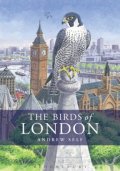
|
|
The Green London Way: Walking the City's History and WildlifeBob Gilbert
Lawrence & Wishart
2nd edition
2012
"The Green London Way is an alternative approach to the exploration of London. The book describes a hundred mile walk circling the capital, but, uniquely, also offers insightful histories of London's people and a commentary on its abundant local wildlife. The walk, divided into manageable sections, each with maps by Graham Scrivener (the 'urban Wainwright'), traverses London's tow paths, woodlands and commons, examining links between local human history and the landscape on which it is founded. This updated version of the text also incorporates discussion of the rapid developments in London in the past twenty years, analysing the features which have recently changed the face of the city. Bob Gilbert provides a wealth of information about the plant and animal life of London, including some surprising instances of rare species. In terms of wildlife, landscape and history, The Green London Way is full of discoveries for any walker or reader, and provides a new awareness of Greater London."
|
Buy from amazon.co.uk 
|
|
Nature Near LondonRichard Jeffries
Introduction: Robert McFarlane
Collins
2012
Originally published in 1883
"Nature Near London is a collection of observational pieces from locations near London at the end of the 19th Century. The depth of knowledge and of familiarity with particular places and particular species gives the impression that each small piece is the product of many years of observation. His style of observation is a work in miniature - cataloguing the most minute details; the dancing of a flower in the wind or the darting of a cautious trout. The chapters centre on a special place, a certain species, geographical feature or habitat - everything from orchards and copses to rivers and streams. The final chapters are a departure - both from the character of the rest of the book, and from London itself, as Jefferies boards the train to Brighton. Suddenly he is describing people and their relationship to nature, as much as nature itself. The scope widens, less a work in miniature, more surging towards a triumphant end as Jefferies becomes ever more philosophical."
|
Buy from amazon.co.uk 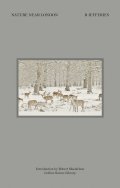
|
|
My Garden, the City and Me: Rooftop Adventures in the Wilds of LondonHelen Babbs
Timber Press
2011
"This book charts, over one year, her first steps with plants and the discoveries she makes along the way as she tussles with garden pests, watches falcons from the top of a skyscraper and beachcombs along the strand by the River Thames. As she draws a portrait of her secret green world high up above the urban sprawl, we become aware of the unique ecology of London and the immense web of life that its green spaces support."
|
Buy from amazon.co.uk 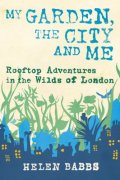
|
|
Animal LondonIanthe Ruthven
Square Peg
2011
"London is full of animals. They are hidden in crumbling graveyards, daubed in canal-bank graffiti, perched atop rooftops. But in the hustle-and-bustle at street-level they are all too often overlooked. This quirky guidebook, with its gorgeous photography, brings to life the animal artworks that give London its unique character. From rabbits, owls, dogs and cats to tortoises, dolphins, sharks and gorillas, a menagerie of creatures inhabits every corner of the capital from Tobacco Docks to Crystal Palace, Bankside to Hackney.They span both ancient and modern too: monstrous medieval gargoyles lurk down damp alleyways, while in a modern urban wasteland there lives a 'mechanosaurous' made out of car parts by scrap merchants. These animals fill London with life. From the moment you spy one in the undergrowth of a neglected park, or spot for the first time one clinging to the parapet of a classic landmark, you will embark on a remarkable topographical treasure-hunt."
|
Buy from amazon.co.uk 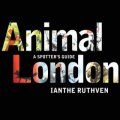
|
|
Watching Wildlife in London: A Guide to More than 50 Key Sites and 500 SpeciesMarianne Taylor
New Holland Publishers
2010
"Many people are unaware that the city of London is rich in wildlife, and that many of the most interesting and spectacular species can be seen within a few minutes' walk of the tourist trail. The first eight chapters provide an informative 'where to watch' guide describing key sites from the centre to the suburbs, along with what you can expect to see there. This ranges from wildfowl and birds of prey in the centre of town to deer and other mammals around Richmond; from butterfly and wildflower hot-spots to a haven for wading birds and Water Voles beside the Thames. Each chapter gives a general overview of the terrain and the wildlife present, and series of boxed texts look in detail at interesting case studies, or personal 'pages from the notebook'. The final third of the book is a fully illustrated colour identification guide to 600 of the most common or remarkable species found in the capital, covering birds, animals, invertebrates and plants. The writing style is easy-going and engaging, aimed at a lay audience of city residents and visitors alike."
|
Buy from amazon.co.uk 
|
|
The London LoopDavid Sharp
Aurum Press Ltd
2010
"The LOOP (London Outer Orbital Path) is a 140-mile (224-km) walking route around the capital's periphery that utilises the network of rural footpaths linking the secret ribbons of greenery that still survive amidst the suburban sprawl. In this guide the route is divided into fifteen sections, each representing a reasonable day's walking and starting and finishing at locations readily accessible by public transport. Users of the guide will be astonished at the extent and variety of the countryside that still exists within the orbit of this ‘walker's M25' and at the number of fascinating sites – ancient woodlands, historic buildings and parklands, picturesque villages, rivers, canals and nature reserves – to which the Loop will lead them. David Sharp, Londoner and veteran rambler, was one of the ‘founding fathers' of the Loop which (like the second, inner, orbital path, the Capital Ring, also the subject of one of Aurum's Recreational Path Guides) was conceived and devised by the London Walking Forum and developed in collaboration with the London boroughs in the course of the 1990s."
|
Buy from amazon.co.uk 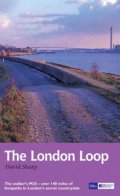
|
|
London's Changing Natural History: Classic Papers from 150 Years of the London Natural History SocietyEditor: Mark Burgess
London Natural History Society
2008
"Chosen from the many important contributions to the Society's journals, these papers range from 1916 to 1997, and cover taxa from algae to mammals. Other papers cover topics such as a survey of four London churches made before World War II. Bomb damage to the city provided a window of opportunity to survey the succession of plant and animal life which the members eagerly seized and wrote about. The same was true of the bomb craters at Bookham Common, a site the Society has been surveying for over 60 years. The rivers hidden under London streets, the disappearance of starlings from Trafalgar Square, the effects of air and water pollution with their later amelioration, and the evidence for climate change are also the subjects of papers included in this volume. Photographs of some past members are included. Most papers are preceded by commentaries by present members. Notable among these is a reminder of the many contributions that members of the Society have made and continue to make to Collins's New Naturalist series. Other commentaries provide a valuable conspectus of the present state of nature in London and highlight the challenges of the twenty-first century."
|
Buy from amazon.co.uk 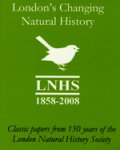
|
|
Explore Wild Essex: A Guide to the Nature Reserves and Country Parks Essex and East LondonEditor: Tony Gunton
Lopinga Books in association with the Essex Wildlife Trust
2008
"The publication includes details of all Essex Wildlife Trust nature reserves and 180 other wildlife sites across the county. A total of 40,000 acres of wildlfe sites across Essex are included. Tables and indexes help you to choose the best time to visit and which sites have the facilities you need. Over 200 detailed colour maps help you to find and explore each site. Colour photographs illustrate the most interesting Essex animals, plants and habitats."
|
Buy from amazon.co.uk 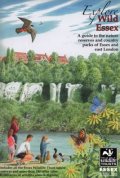
|
|
Two Centuries of Croydon's BirdsEditor: John Birkett
RSPB Croydon Local Grou
2007
|
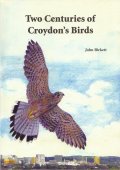 |
|
South West London Waterbodies SPA Wildfowl Population AnalysisA.N. Banks, G.E. Austin, and M.M. Rehfisch
BTO Report 361
British Trust for Ornithology
2006
"The South West London Waterbodies SPA, which comprises seven SSSIs, is designated for internationally important numbers of wintering Gadwall and Shoveler. It also supports large numbers of Tufted Duck. This work looks at the numbers of these waterfowl, which have been suggested to decline across the SPA."
|
Buy from amazon.co.uk 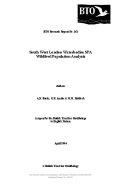
|
|
Wild London: The Nature of a CapitalIain Green
Tiger Books
2006
"Wild London...A bustling city of seven million people, but home to some of Britain's rarest species of wildlife...It is a thriving metropolis, yet one of the greenest capitals in the world. In contrast to the normal vision of London, this book showcases the astonishing, remarkable and fascinating diversity of wildlife to be found within its boundaries - from familiar species to the rare and unusual...inhabiting ancient woodlands or living on high-rise office blocks...The sumptuous photography of "Wild London" by internationally acclaimed wildlife photographer, lain Green, allows the reader to explore the nature of the capital through the changing seasons. Discover the floral anarchy in Downing Street, newts at Heathrow, stag nights in south London, tranquil urban wetlands, theatreland frogs, power station peregrines, bee orchids, bluebells, black redstarts, water voles and even seals and dolphins in the Thames - just a few of the city's wild highlights. A descriptive and informative text looking at London's important habitats and species complements 175 beautiful photographs."
|
Buy from amazon.co.uk 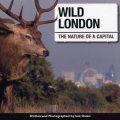
|
|
Feathers and Eggshells: The Bird Journal of a Young London GirlNatalie Lawrence
Brambleby Book
2005
"Natalie Lawrence is a teenager with a passion for wild birds. Here she takes us on an extended tour of her favourite bird watching area - Hampstead Heath in London, a haven for wildlife comprising different habitats. From the mating dance of the Great Crested Grebe to the delicacy of the Treecreeper's beak, she reveals the beauty and diversity of the local bird life using drawings and photographs, prose and poetry. This is a jewel of a book, the kind of small volume that all bird lovers will surely wish to own, indeed treasure. It reveals a wealth of beautiful things, and as such, is an inspiration for young and old alike."
|
Buy from amazon.co.uk 
|
|
The Breeding Birds of the London AreaEditor: Jan Hewlett
Foreword: R.S.R. Fitter
Historical perspective: E.M. Nicholson
London Natural History Society
2002
"Recording the bird life of London and its surrounding rural fringe, this important book traces changes in the capital's breeding birds in the last 30 years of the 20th century, a period of major environmental change in both town and countryside. It compares maps of breeding distribution in 1988-94 with earlier surveys and documents both the success of species such as the Great Crested Grebe, Magpie and Sparrowhawk in colonising new areas and the decline of once-familiar species such as the Barn Owl and Yellowhammer in the London Area. Line drawings illustrate most species."
|
Buy from amazon.co.uk 
|
|
Birds of Brent ReservoirRoy Beddard et al
Welsh Harp Conservation Group
2001
"A 240 page book detailing the birdlife of Brent Reservoir in NW London along with chapters on other forms of wildlife. Illustrated thoughout with line drawings by artists such as Jan Wilczur along with many colour photographs taken at the reservoir."
|
Buy from amazon.co.uk 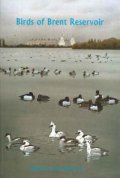
|
|
Wimbledon Common And Putney Heath: A Natural HistoryEditor: Tony Drakeford and Una Sutcliffe
Wimbledon & Putney Commons Conservators
2000
|
Buy from amazon.co.uk 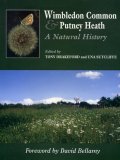
|
|
The Birds of Regent's ParkRolfe Green
Royal Parks
1999
"Almost 200 species have been recorded in the Park, with one third of them having bred as 'resident' or transient during the 19th and 20th centuries. All are detailed here. The text is accompanied by 41 fine pencil illustrations by Maggie Silver."
|
Buy from amazon.co.uk 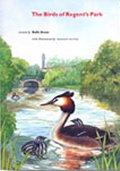
|
|
Site Action Plan for Black Redstarts Phoenicurus ochruros in the Deptford Creek Area, Greenwich, LondonS.J. Holloway & D.E. Glue
BTO Report 212
British Trust For Ornithology
1999
"This study, commissioned by Ove Arup Environmental, provides a site action plan for nesting Black Redstarts at Greenwich Reach East, London, with the aim of maintaining the population after site redevelopment. The UK status and the breeding biology of the Black Redstart are reviewed A visit was made in October 1998 to the proposed redevelopment site and also to several sites in the immediate vicinity where Black Redstarts are currently known to breed. Suggested mitigation measures include the provision of artificial nestboxes, the maintenance of existing nest sites wherever possible, and the retention and maintenance of as many of the existing foraging areas as possible. Potential new foraging areas should be created, e.g. by covering flat roofs with gravel.
|
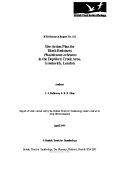 |
|
The Natural History of Buckingham Palace GardenEditor: Colin W. Plant
London Natural History Society
1999
|
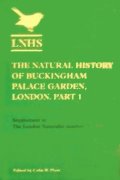 |
|
Where to Watch Birds: London areaDominic Mitchell, Jan Wilczur
Christopher Helm
1997
"This is one of a series of guides on birdwatching in different regions. It contains site accounts, plans, maps, lists of birds in the region, and advice on planning birdwatching trips. The book covers every key site from the Central London parks to the marshes of the Thames, and the wetlands and reservoirs of the Colne and Lee Valleys. It also covers advice about habitat, the birds most likely to be seen, when to visit to see which species of bird, and how to get there, including full public transport information."
|
Buy from amazon.co.uk 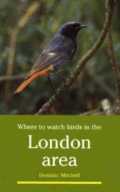
|
|
Nature Conservation in BarnetJan Hewlett
Ecology Handbook 28
London Ecology Unit
Greater London Authority
1997
"This is one of a series of guides on birdwatching in different regions. It contains site accounts, plans, maps, lists of birds in the region, and advice on planning birdwatching trips. The book covers every key site from the Central London parks to the marshes of the Thames, and the wetlands and reservoirs of the Colne and Lee Valleys. It also covers advice about habitat, the birds most likely to be seen, when to visit to see which species of bird, and how to get there, including full public transport information."
|
Buy from amazon.co.uk 
|
|
Site Action Plan for Black Redstarts Phoenicurus ochruros in the Deptford Creek AreaK. Evans
BTO Report 228
British Trust For Ornithology
1997
"The area around Deptford Power Station is in the process of being redeveloped. In late June 1997 a local ornithologist observed Black Redstarts in the area. This species is a rare breeding bird in Britain and is fully protected by legislation through its listing in Schedule 1 of the Wildlife and Countryside Act (1981). The site manager was informed and demolition work was halted. Detailed ornithological survey work reveal ed the presence of two females and one male. Later it was established that the nest was not located in the buildings that were due for demolition. Development work recommenced and at least four young fledged successfully. A wide range of further development work is planned for the site which could adversely affect the Black Redstarts through disturbance and habitat change. This Site Action Plan provides information on the status and biology of Black Redstarts, the impact of the site development as planned and suggests methods for ensuring that the site remains suitable for Black Redstarts.
|
 |
|
Bird-Watching in London: A historical perspectiveE.M. Nicholson
London Natural History Society
1995
"Personal account of bird-watching in inner London in the mid 1920s, from this distinguished ornithologist and conservationist, based on his own original observations. Separate chapters cover London's ducks and gulls, the flylines over London, the birds of Kensington Gardens, and bird protection in London. An appendix by Roy Sanderson, one of the last Official Observers of Hyde Park and Kensington Gardens, brings the history of the birds of the parks up to date."
|
Buy from amazon.co.uk 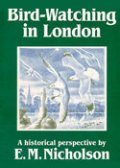
|
|
Birds of the Roding ValleySimon Papps & Chris Johnson
Friends of the Roding
1988
A 26 page booklet.
|
Buy from amazon.co.uk 
|
|
Wild in LondonDavid Goode
A Shell Book
Michael Joseph
1986
|
Buy from amazon.co.uk 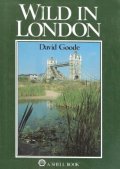
|
|
City Safari: Wildlife in LondonGavin Weightman and Mike Birkhead
LWT
Sidgwick and Jackson
1986
|
Buy from amazon.co.uk 
|
|
The Birds of Croydon and Its Countryside
Stephen Holloway and Ken Magga
North Down Press
1986
A set of three 60 (odd) page booklets:
Part 1: Introduction
Part 2: The Urban Core, Vol. I
Part 2: The Urban Core, Vol. II
|
Buy from amazon.co.uk 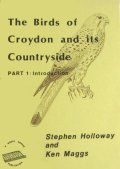
Buy from amazon.co.uk
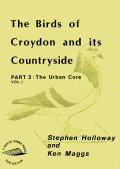
Buy from amazon.co.uk
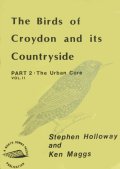
|
|
Wildlife in the City: Animals, Birds, Reptiles, Insects and Plants in an Urban LandscapeAlan C. Jenkins
1982
|
Buy from amazon.co.uk 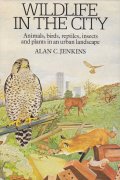
|
|
Atlas Of Breeding Birds of the London AreaDavid J. Montier
London Natural History Society
Batsford
1977
|
Buy from amazon.co.uk 
|
|
The Naturalist In LondonJohn A. Burton
David & Charles
1974
170 pages with b/w photographs and maps.
|
Buy from amazon.co.uk 
|
|
Bird Life in the Royal Parks 1965-66Committee on Bird Sanctuaries in the Royal Parks England and Wales
Illustrations: Robert Gillmor
HMSO
1968
A 35 page booklet.
|
Buy from amazon.co.uk 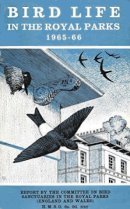
|
|
The Birds of the London AreaLondon Natural History Society
Hart-Davis
1964
A 332 page study.
|
Buy from amazon.co.uk 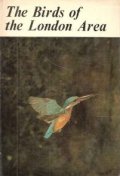
|
|
The Birds of the London AreaLondon Natural History Society
Collins
The New Naturalist Monograph 14
1957
A 305 page study of the birds of the London area since 1900.
|
Buy from amazon.co.uk 
|
|
The Natural History Of The City
R.R.S. Fitter and J.E. Lousley
Corporation of London
1953
A 36 page booklet.
|
 |
|
London's BirdsR.S.R. Fitter
Collins
1949
|
Buy from amazon.co.uk 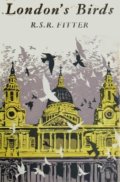
|
|
Birds of the Harrow DistrictB.H. Harley
Published by the author
1949
|
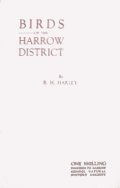 |
|
Bird-Watching In London
Richard R.S. Fitter
Illustrations: Roland Green
Royal Society For The protection Of Birds
1948
One of a series of short booklets about birdwatching in English counties.
|
 |
|
London's Natural HistoryR.S.R. Fitter
Collins
The New Naturalist 3
1945
"Richard Fitter provided the first comprehensive history of a great human community in terms of the animals and plants it has displaced, changed, moved and removed, introduced, conserved, lost or forgotten. In selecting London as an area for such study Mr.Fitter, himself a Londoner, took the world's largest aggregation of human beings living in a single community and in many ways the most interesting perhaps of all regions of the British Isles, and showed how the spread of man's activities affected the plants and animals in them, destroying some, creating others."
|
Buy facsimile reprint from amazon.co.uk 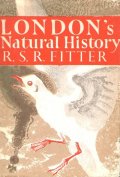
|
|
Birds Of The Green Belt And The Country Around LondonR.M. Lockley
H.F. & G. Witherby
1936
|
Buy from amazon.co.uk 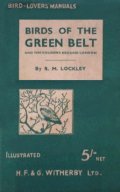
|
|
Sea-gulls in LondonSeton Gordon
Cassell
1935
|
Buy from amazon.co.uk 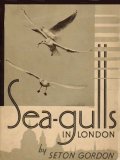
|
|
A History Of The Birds Of MiddlesexWilliam Glegg
Witherby
1935
|
Buy from amazon.co.uk 
|
|
Familiar London BirdsFrank Finn
Hutchinson & Co.
192?
Opening paragraphs: "London offers unrivalled opportunities to people who take an interest in birds, whether they simply like watching them or wish to begin bird-study on a scientific basis. It is true that not many different kinds of birds are found in London at all commonly, especially in the inner portions of our area ; but this is of itself an advantage to the beginner, since where many kinds of birds are found their very abundance is confusing. Where there are only a few kinds, those that are strikingly different are easily learnt, and one has time to take notice of the differences between those that are more similar to each other. i Familiar London Birds Now, although the actual species of common London birds are few, they represent a wide range of families, and so one easily gets an acquaintance with different types ; for instance, everyone knows pigeons from gulls or crows, and these groups can all be studied in detail in London, and the differences between the various species of each can be easily made out, as the birds are so tame. As over two hundred species of birds have been known to occur in the London district, I have had, in a work of this size, to make a selection including only those which are most likely to attract notice, especially in Inner London ; but I have not excluded caged finches or pinioned waterfowl, when the species are known also to occur wild, even though rarely."
|
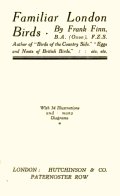
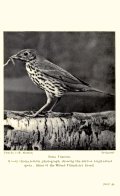 |
|
Ornithological Notes From A South London Suburb, 1874-1909F.D. Power
Henry J. Glaisher
1910
From the introduction: "Brixton at the present day, constituting as it does part of Greater London, would probably not be considered a likely spot to provide a very large measure of Natural History observations, at any rate on Ornithology. Nevertheless, the greater portion of the following records emanates from one garden in that suburb - a most fortunate and favoured point of observation from the fact that it is in a line of migration, which, if not very marked when the birds are arriving in spring, is most pronounced and unmistakable at the time of the autumn passage. The district has, however, altered very greatly during the last 30 years - possibly more than any other suburb of the Metropolis. What little waste land existed in 1874 between Brixton and Herne Hill is now covered with houses; in fact, the two suburbs are continuous, and Herne Hill can no longer claim to be in the country. Even Dulwich Hamlet is fast losing its old village appearance, though exhibiting the least change of any of the neighbouring suburbs, and is still notable for its grand old elms. The changed character of Brixton and its surroundings has had a marked effect on bird life, - more especially shewn in the yearly diminishing record of breeding species; a fact very evident in the ten-year summaries I had drawn up when arranging these notes. But a falling off is observable also among the migrants with regard to the number of species that appear, although, I think, not in the actual numbers of birds that pass over us. Apart from the many migrants, it is owing to our local parks and commons and the still-existing woods of Dulwich and Sydenham that so many birds are still attracted, and that the breeding species are even now fairlv numerous. Brockwell Park, an old estate containing some fine trees and a delightful old garden, formed a great attraction and refuge for birds before it was thrown open to the public; and, although it doubtless still attracts many species for food, temporary rest, only a comparative few now make it a home. Even the long-established Rookery has been broken up within the last few years, and now the Thrush tribe alone seems to flourish there in its former numbers, together with some Finches and Tits."
|
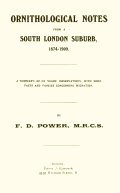

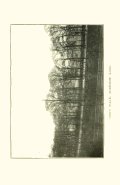
|
|
The Bird-Life Of LondonCharles Dixon
Illustrations: John Duncan
W. Heinemann
1909
Preface: "The present volume is the result of many years' observation of the Bird-Life of London. For the past eight years a more or less continuous residence in the Metropolis has enabled me not only to arrange the many notes already in my possession (some of these date back to 1880), but to devote a considerable time to the special study of its avifauna. The species dealt with include all that are found resident within the fifteen-mile radius; all that visit that area either as summer or winter migrants; and, finally, the casual wanderers that occur at irregular intervals. A brief history has been given of each species fairly claiming a place in the list of London birds, together with a description of the adult and young plumage, which will enable the student readily to identify them. My book has been written to encourage the observation of the Bird-Life of London, and I hope it may prove of some assistance to the pursuit of Nature-study in the elementary schools of the Metropolis. Most suburban residents take an intelligent interest in the birds of their particular neighbourhood, and these, I trust, may find something of use to them in the following pages. My radius of fifteen miles may seem a somewhat wide one; but in these days, when space is annihilated, I may be forgiven the extension, although it includes in each direction, very fairly, the limits of the Great Metropolis. The series of singularly life-like pictures which adorns the following pages has been drawn by my old friend Mr. John Duncan, of Newcastle. I am indebted to the proprietors of the Newcastle Weekly Chronicle for permission to use them here, and to them I desire to tender my best thanks for the favour."
|
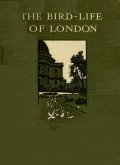

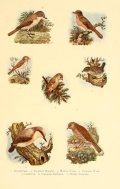 |
|
London Birds And Other SketchesT. Digby Pigott
Edward Arnold
Revised edition
1902
From the preface: "This little book has no pretence to be anything more than a collection of notes made, at different times and in varying surroundings, from the back of a favourite Hobby one that has this special recommendation, that, when once mounted, it is to the most beautiful spots that it oftenest carries the rider: to 'thick grove and tangled stream'; to moor, meadow, forest, and marsh; to sea-cliffs haunted by myriads of sea-fowl; to island-studded lakes and lonely mountains. If by any lucky chance anything in it should be the means of awakening in a young reader a first interest in bird or insect, it will not be until his hair is silvering that he will realise the extent of his debt to the writer."
|
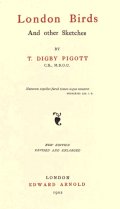
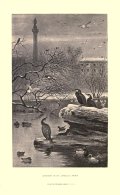
|
|
The Naturalist On The ThamesC.J. Cornish
Seeley & Co
1902
Preface: "Having spent the greater part of my outdoor life in the Thames Valley, in the enjoyment of the varied interests of its natural history and sport, I have for many years hoped to publish the observations contained in the following chapters. They have been written at different intervals of time, but always with a view to publication in the form of a commentary on the natural history and character of the valley as a whole, from the upper waters to the mouth. For permission to use those which have been previously printed I have to thank the editors and proprietors of the Spectator, Country Life, and the Badminton Magazine."
|
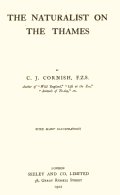

|
|
Birds in LondonW. H. Hudson
Longmans, Green, And Co.
1898
From the preface: "The opening chapter contains, by way of introduction, all that need be said concerning the object and scope of this work; it remains to say here that, as my aim has been to furnish an account of the London wild bird life of to-day, there was little help to be had from the writings of previous observers. These mostly deal with the central parks, and are interesting now, mainly, as showing the changes that have taken place. At the end of the volume a list will be found of the papers and books on the subject which are known to me. This list will strike many readers as an exceedingly meagre one, when it is remembered that London has always been a home of ornithologists - that from the days of Oliver Goldsmith, who wrote pleasantly of the Temple Gardens rookery, and of Thomas Pennant and his friend Daines Barrington, there have never been wanting observers of the wild bird life within our gates. The fact remains that, with the exception of a few incidental passages to be found in various ornithological works, nothing was expressly written about the birds of London until James Jennings's 'Ornithologia' saw the light a little over seventy years ago. Jennings's work was a poem, probably the worst ever written in the English language; but as he inserted copious notes, fortunately in prose, embodying his own observations on the bird life of east and south-east London, the book has a very considerable interest for us to-day. Nothing more of importance appeared until the late Shirley Hibberd's lively paper on 'London Birds' in 1865. From that date onward the subject has attracted an increased attention, and at present we have a number of London or park naturalists, as they might be called, who view the resident London species as adapted to an urban life, and who chronicle their observations in the 'Field,' 'Nature,' 'Zoologist,' 'Nature Notes,' and other natural history journals, and in the newspapers and magazines. To return to the present work. Treating of actualities I have been obliged for the most part to gather my own materials, relying perhaps too much on my own observation; since London is now too vast a field for any person, however diligent, to know it intimately in all its extent."
|
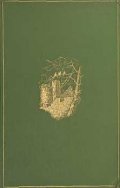
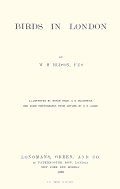
 |
|
London Birds An BeastsJ.T. Tristram-Valentine
Foreword: Frank E. Beddard
Introduction: Gordon Wigan
Horace Cox
1895
From the preface: "Every book published must of course stand or fall by its own merits and the verdict of the public; but in the case of a book of this nature, made up as it is of articles written from time to time, without any settled connection made by the author, it is perhaps not impertinent for those who know the private history of the work to put forth an introduction pointing out matters of some public interest which would hardly be perceived from internal evidence. From a purely natural history point of view it may be well to point out that the author was one of that valuable race, the sportsmen naturalists. He enjoyed keenly a good day's shooting, and his greatest pleasure was to secure his bag by his knowledge of woodcraft, and of the habits of game birds. Every note in the present book is the result of personal observation, most of the material for the. papers on London Birds having been picked up in his almost daily walk from Kensington to West- minster through the parks."
|
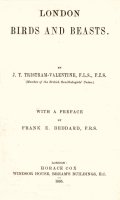
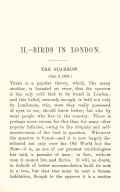
|
|
The Birds Of LondonH.K. Swann
Swan Sonnenschien & Co
1893
Preface: "In the following pages an effort has been made to include all the species of birds which have occurred, more or less frequently, within
a radius of some twelve miles of London, and to give as complete an account as possible of their distribution. In the Appendix will be
found mention of one or two species which have been reported to have occurred in the vicinity of London, but whose occurrence is open to doubt, together with such additions as have been made since the first part of the work was written. The nomenclature and classification followed are those adopted by Mr. Howard Saunders in his recently published Illustrated Manual of British Birds. Among those who have contributed notes and information, the author especially wishes to thank Messrs. A. F. Gates, H. T. Booth, B. R. Harrison, and others, for their assistance. Information has also been gathered from Mr. J. E. Harting's valuable Birds of Middlesex, Mr. G. E. H. Barrett-Hamilton's Harrow Birds, Colonel Bridgeman's list of birds forming the Appendix to the Flora of Harrow, and other works; also from the columns of the Zoologist, the Field, and other periodicals."
|
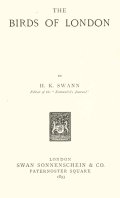

|
|
London Birds And London Insects And Other SketchesT. Digby Pigott
H. Porter
1892
Opening lines: "We are so accustomed to associate birds 'the smiles of creation' with all that is wild and fresh, and pleasant, and unlike a great town, that to speak of the birds of London sounds rather like talking nonsense. It is, however, one great advantage which an ornithologist has over most other lovers of natural history, that there are few places in which he cannot find something in his own particular line to interest him, unless it is in countries where Robins and Tomtits have been too long marketable delicacies, and where, as in some parts of the Continent, woods and plantations are dying off in consequence lands smitten with worms for having slaughtered the innocents."
|

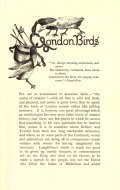
|
|
Harrow BirdsG.E.H. Barrett-Hamilton
Harrow School Scientific Society
1892
|

|
|
The Birds Of MiddlesexJames Edmund Harting
John Van Voorst
1866
From the introduction: "The advantages of local Faunas, says Professor Bell, are too generally understood and acknowledged to require any lengthened proof or illustration. It may, indeed, be doubted whether the study of the animals of particular tracts of country have not contributed, more than any other means, to the advancement of Zoological knowledge, especially as regards those important branches of it, the geographical distribution of animals, and the influence of climate, of soil, and of other local circumstances, in determining the range of species, the changes of varieties, and the extent and periods of migration." From time to time there have issued from the press various local Natural Histories; but no work, so far as I am aware, has yet been published upon any branch of the Zoology of Middlesex. To write the complete Natural History of a county is an undertaking for which few can find time, even if they possess the necessary qualifications; but by a division of labour the task becomes not only lightened, but more perfectly executed; and it has been with a view of contributing towards a Natural History of Middlesex that I have ventured to publish these notes on birds."
|

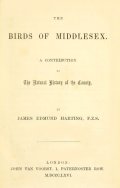
|
|
Summer's Evening Rambles Round WoolwichR. Ruegg
Boddy
1847
|
 |
|